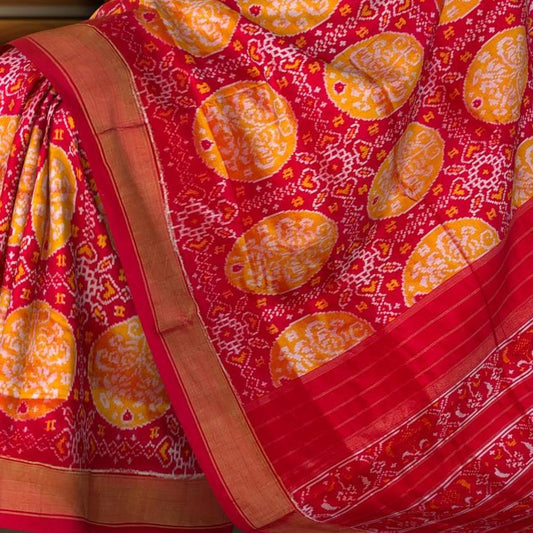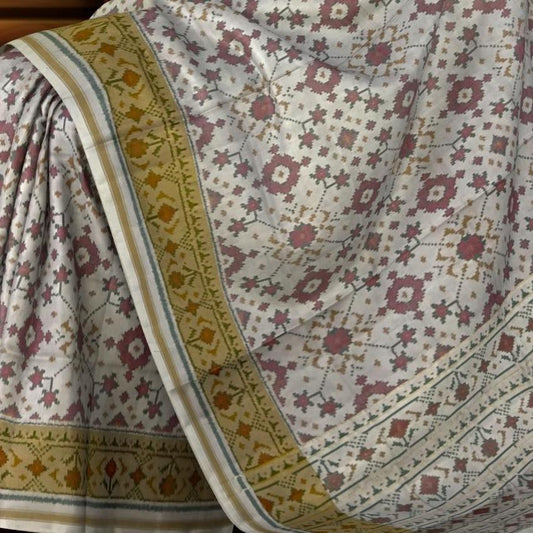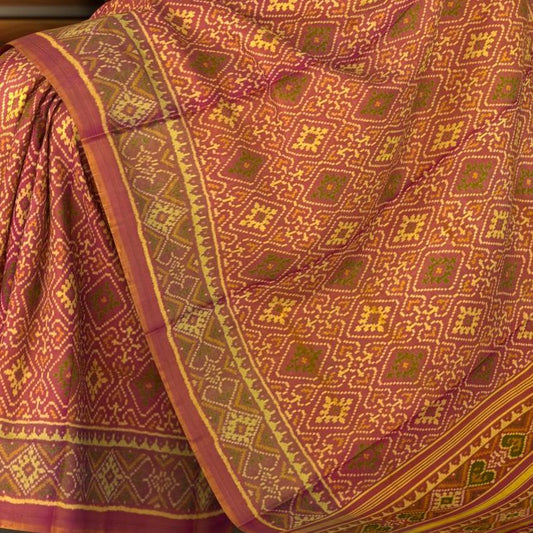The Timeless Artistry: Sustainability Practices in Kanjivaram Silk Saree Weaving

In the heart of Tamil Nadu, India, lies a traditional craft that embodies the spirit of sustainability - the art of weaving Kanjivaram silk sarees. These exquisite garments have not only stood the test of time but have also embraced sustainable practices that reflect a harmonious relationship with nature and the local community.
In this article, we delve into the world of Kanjivaram silk saree weaving and explore the remarkable sustainability practices that make it a shining example of eco-conscious craftsmanship.
1. Traditional Techniques Meet Modern Sustainability
Kanjivaram silk sarees are renowned for their rich colors, intricate patterns, and unparalleled craftsmanship. What makes them even more special is the fusion of age-old weaving techniques with modern sustainable practices. Weavers have embraced eco-friendly dyeing methods, using natural dyes sourced from plants and herbs, thus reducing the environmental impact of chemical dyes.
2. Responsible Material Sourcing
Sustainability begins at the very core of Kanjivaram silk saree weaving - the materials used. The silk yarn used for weaving is sourced from silk-producing regions, supporting local sericulture and ensuring a transparent and ethical supply chain. This not only reduces the carbon footprint but also contributes to the economic empowerment of rural communities.
3. Minimizing Waste through Innovation
Weaving Kanjivaram silk sarees involves meticulous planning and innovation to minimize wastage. Weavers carefully calculate the amount of yarn required for each saree, ensuring minimal leftovers. Any excess silk is often repurposed into smaller accessories or used in patchwork, leaving virtually no waste behind.
4. Preservation of Cultural Heritage
One of the most remarkable aspects of sustainability in Kanjivaram silk saree weaving is its role in preserving cultural heritage. By investing in traditional techniques, the craft continues to thrive, providing livelihoods for weaver families and preventing the loss of invaluable cultural knowledge.
5. Local Empowerment and Fair Trade Practices
Sustainability in Kanjivaram silk saree weaving extends beyond environmental concerns to encompass social and economic well-being. Weavers' cooperatives and organizations ensure fair wages and ethical working conditions for artisans. By empowering local communities, this craft contributes to the socio-economic development of the region.
6. Education and Awareness
Promoting sustainability in Kanjivaram silk saree weaving involves educating both artisans and consumers about the value of eco-friendly practices. Workshops and training programs are organized to teach weavers about the benefits of natural dyeing, waste reduction, and responsible material sourcing. Additionally, consumers are made aware of the environmental and social impact of their purchases, encouraging conscious buying decisions.
Conclusion
Kanjivaram silk saree weaving stands as a shining example of how tradition and sustainability can seamlessly intertwine. By embracing eco-friendly practices, responsible material sourcing, and fair trade principles, this craft not only produces exquisite garments but also nurtures the environment and empowers local communities.
As consumers, understanding the value of these sustainability practices can lead us towards a more conscious and compassionate approach to fashion, one that appreciates the intricate threads connecting culture, craftsmanship, and the planet.







Leave a comment
Please note, comments need to be approved before they are published.